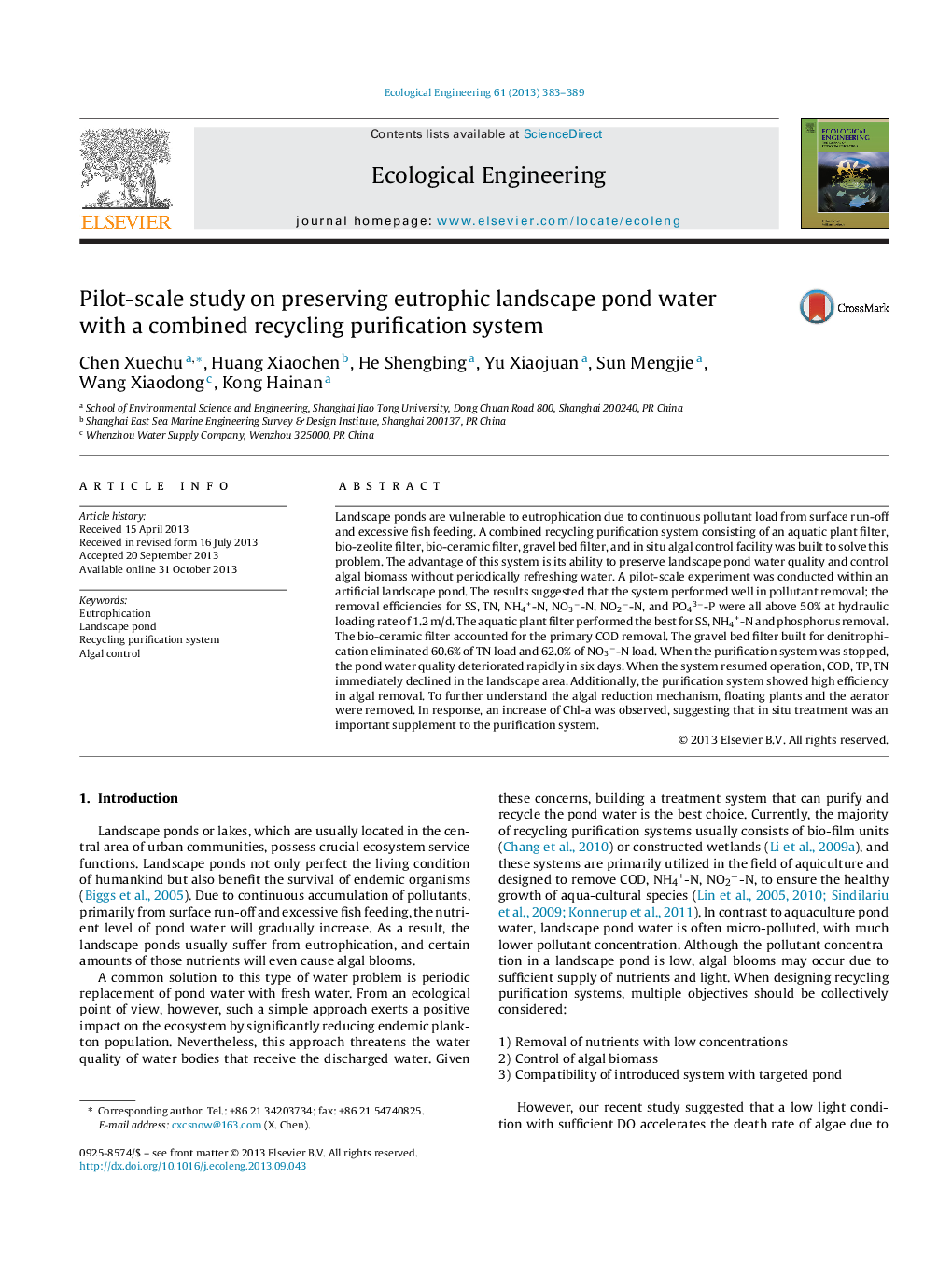| کد مقاله | کد نشریه | سال انتشار | مقاله انگلیسی | نسخه تمام متن |
|---|---|---|---|---|
| 4389501 | 1305129 | 2013 | 7 صفحه PDF | دانلود رایگان |

• A combined recycling purification system for preserving eutrophic landscape pond water was reported.
• The purification system is consisted of four filter units and an in situ algal control facility.
• We conducted a pilot-scale experiment to verify such combinations, and evaluated its performance, as well as the removal mechanisms.
• The results indicated that the system can both preserve pond water quality and control algal biomass without refreshing water.
Landscape ponds are vulnerable to eutrophication due to continuous pollutant load from surface run-off and excessive fish feeding. A combined recycling purification system consisting of an aquatic plant filter, bio-zeolite filter, bio-ceramic filter, gravel bed filter, and in situ algal control facility was built to solve this problem. The advantage of this system is its ability to preserve landscape pond water quality and control algal biomass without periodically refreshing water. A pilot-scale experiment was conducted within an artificial landscape pond. The results suggested that the system performed well in pollutant removal; the removal efficiencies for SS, TN, NH4+-N, NO3−-N, NO2−-N, and PO43−-P were all above 50% at hydraulic loading rate of 1.2 m/d. The aquatic plant filter performed the best for SS, NH4+-N and phosphorus removal. The bio-ceramic filter accounted for the primary COD removal. The gravel bed filter built for denitrophication eliminated 60.6% of TN load and 62.0% of NO3−-N load. When the purification system was stopped, the pond water quality deteriorated rapidly in six days. When the system resumed operation, COD, TP, TN immediately declined in the landscape area. Additionally, the purification system showed high efficiency in algal removal. To further understand the algal reduction mechanism, floating plants and the aerator were removed. In response, an increase of Chl-a was observed, suggesting that in situ treatment was an important supplement to the purification system.
Journal: Ecological Engineering - Volume 61, Part A, December 2013, Pages 383–389